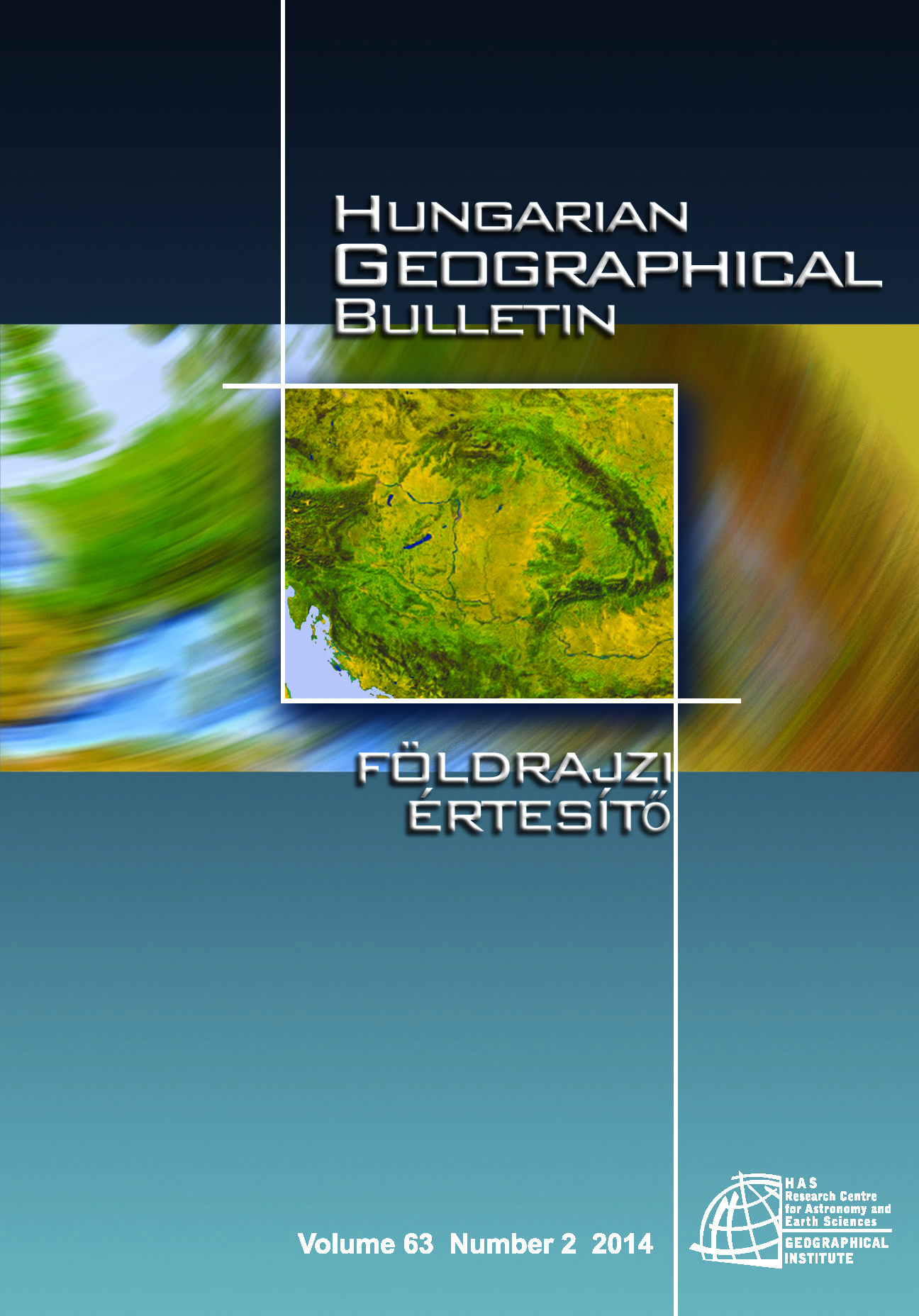Time-space differences of population ageing in Europe
Abstract
Age structure is one of the most important demographic characteristics of the population, which is multicausally related to almost all population processes. On one hand, age structure is the complex result of processes such as fertility, mortality, immigration and emigration. At the same time, it substantially affects a number of socio-demographic phenomena such as marriage, divorce, migration, potential labour resources etc. Certain relationships between the age structure and other population characteristics, such as ethnic, educational, sex, economic or religious structure can also be observed. The demographic behaviour of the European population in the second half of the 20th and the beginning of the 21st century is characterised by significant changes. They are reflected in a number of population processes and indicies, which are typically interconnected and interrelated. These changes have been most strikingly manifested in a drop of fertility rates, changes in family behaviour, and shifts in the age structure of the population. The main aim of this paper is to analyse the time-space development of the age structure of the European population. The period of investigation is 1950-2010 which is extended by a projected development until 2060. Changes in age structure are analysed through several indicators such as coefficients of inflow, outflow and exchange, as well as with indices of economic and social support. Authors make also efforts to provide a complex assessment on population ageing. Using the method of standardised variable, 11 indicators of age structures for 39 European countries are used in the synthesis. In view of the londer time span, several types of age structures are pointed out in Europe.
References
Bartoňová, D. 2001. Demografické chování populace České republiky v regionálním a evropském kontextu (Demographic behavior of population of Czech republic in the regional and European context). In Regionální vývoj: specifika české transformace, evropská integrace a obecná teorie Eds. Hampl, M. et al., Praha, Univerzita Karlova v Praze, 45-73.
Botev, N. 1990. Nuptiality in the Course of the Demographic Transition: The Experience of the Balkan Countries. Population Studies 44. (1): 107-126. https://doi.org/10.1080/0032472031000144406
Carone, G. and Costello, D. 2006. Can Europe Afford to Grow Old? Finance and Development 43. (3): 8-31.
Coleman, D. A. 1993. Contrasting Age Structures of Western Europe and of Eastern Europe and the Former Soviet Union: Demographic Curiosity or Labor Resource? Population and Development Review 19. (3): 523-555. https://doi.org/10.2307/2938465
Dittgen, A. 1989. Population ageing in France, past, present and future. The impact of fertility, mortality and migration. Acta Demographic 9. (2): 7-33.
Grundy, E. 1991. Ageing: Age-Related Change in Later Life. Population Studies 45. 133-156. https://doi.org/10.1080/0032472031000145936
Helpage International 2010. Staying behind: The effects migration on older people and children in Moldava. Chisinau, HelpAge International in Moldova, 42 p. (Last access: 2013-05-19)
Holmerová, I., Jurašková, B. and Zikmundová, K. 2007. Vybrané kapitoly z gerontologie (Selected topics from Gerontology). Praha, EV public relations, 144 p. (Last access: 2010-06-28)
Hrubý, J. 1996. Základy demografie pre manažéra na vidieku (Basic of demographie for the manager in rural area). Nitra, Acta operativo-economica, 103 p.
Jackson, N. 2001. The policy-maker's guide to population ageing: key concepts and issues. Policy research paper 13. Canberra, University Tasmania: School of sociology and social work, 68 p.
Káčerová, M. 2009. Časový a priestorový aspekt poznávania procesu populačného starnutia obyvateľstva Slovenska (Temporal and spatial cognition aspect of the process of population aging in Slovakia). Dizertačná práca. Bratislava, Univerzita Komenskéhov Bratislave. 135 p.
Lanzieri, G. 2011. The greying of the baby boomers. Statistics in focus. Population and social conditions 23. 12 p. (Last access: 2013-04-01)
Leduc, K. 2009. Luxembourg and the ageing of its economicallay active population: From public policies to firms'policies. 15 p. (Last access: 2013-04-21)
Lukic, T., Stojsavlevic, R., Durdev, B., Nad, I. and Dercan, B. 2012. Depopulation in the Western Balkan countries. European Journal of Geography 3. (2): 6-23.
Lutz, W. and Sherbov, S. 2003. Can Immigration Compensate for Europe's Low Fertility? Vienna, Vienna Institute of Demography, 16 p. (Last access: 2013-04-21)
MacKellar, F. L. 2003. The predicament of Population Aging: A review Essay. Vienna Yearbook of Population Research 1. 73-99.
Meslé, F. and Vallin, J. 2002. Mortality in Europe: the Divergence Between East and West. Population (English Edition) 57. (1): 157-197. https://doi.org/10.3917/pope.201.0157
Mládek, J. 1998. Druhý demografický prechod a Slovensko (Second demographic transition and Slovakia). Acta Facultatis Studiorum Humanitatis et Naturae Universitatis Prešoviensis, Folia Geographica 30. (2): 42-52.
Muez, R. 2007. Ageing and Demographic Change in European Societies: Main Trends and Alternative Policy Options. Social Protection Discussion Paper No. 0703. 38 p. (Last access: 2013-05-04)
Nimwegen, N., Esveldt, I. and Beets, G. 2003. Population Trends and Family Policies in the Netherlands. Journal of Population and Social Security (Population), Supplement to Volume 1. 27 p. (Last access: 2013-05-04)
Pastor, K. 1998, Druhá demografická revolúcia (Second demographic transition). In 30 rokov Slovenskej štatistickej a demografickej spoločnosti. Bratislava, Slovenská štatistická a demografická spoločnosť, 34-36.
Population Reference Bureau 2011. World Population Data Sheet 2011. (Last access 2013-04-21)
Rabušic, L. 2001. Kde ty všechny děti jsou? Porodnost v sociologické perspektivě (Where are the all children? Natality in sociological perspective). Praha, Sociologické nakladatelství (SLON), 265 p.
Stankovičová, I. and Vojtková, M. 2007. Viacrozmerné štatistické metódy s aplikáciami (Multivariate statistical methods with applications). Bratislava, Iura Editon, 261 p.
UN 1980. United Nations, Department of International Economic and Social Affairs, 1980. Patterns of Urban and Rural Population Growth. New York, UN, 175 p. (Last Access 2013-04-21)
UN 2001. United Nations, Department of International Economic and Social Affairs, 2001. Replacement Migration: Is It a Solution to Declining and Ageing Populations? New York, UN, 151 p. (Last Access 2013-04-21)
UN 2011. United Nations, Department of International Economic and Social Affairs, 2011. World Population Prospects: The 2010 Revision, CD-ROM Edition. (Last Access 2013-01-04)
Van de Kaa, D.J. 1987. Europe's second demographic transition. Population Bulletin 42. (1): 1-59.
Copyright (c) 2014 Marcela Káčerová, Jana Ondačková, Jozef Mládek

This work is licensed under a Creative Commons Attribution-NonCommercial-NoDerivatives 4.0 International License.






